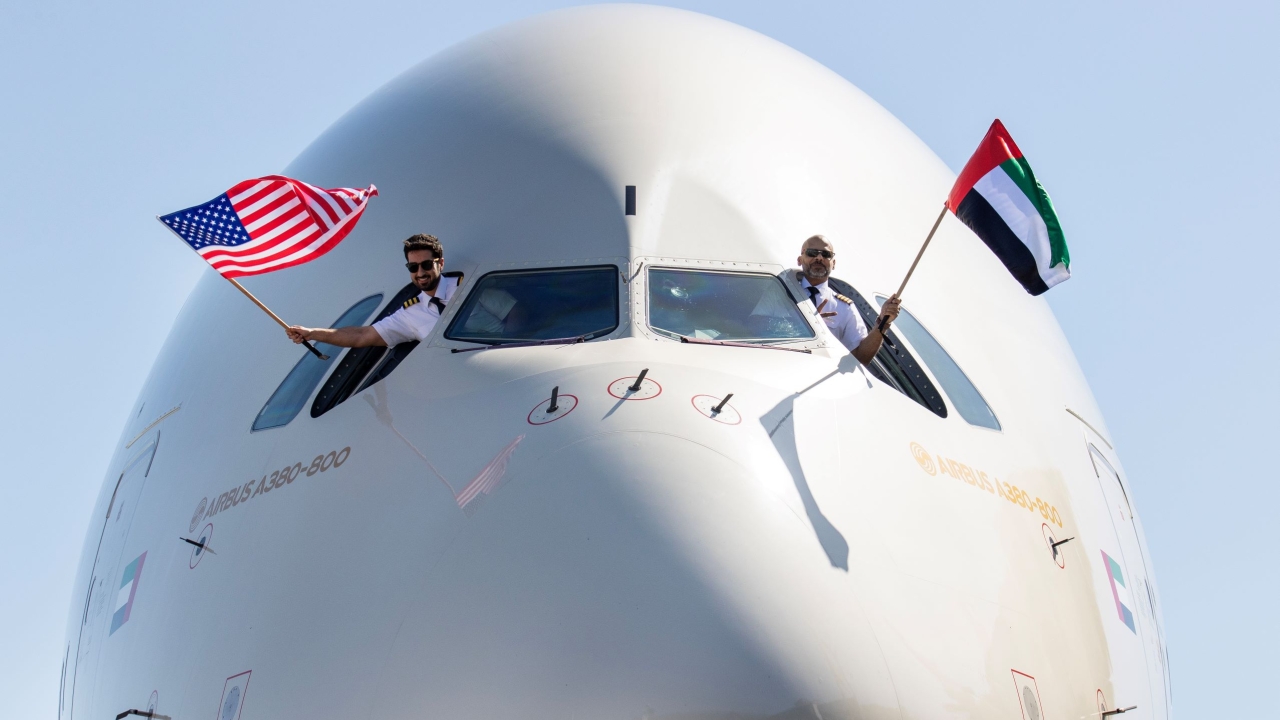Etihad introduces first B787 into commercial service

The first flight, operated by a Boeing 787-9, departed Abu Dhabi at 02.15 as flight EY23 for the 7 hour 25 minute flight to Düsseldorf, Germany. The flight arrived at 06.40 the same morning. The return service from Düsseldorf to Abu Dhabi departs at 10.20 with a scheduled arrival time of 19.50 back in Abu Dhabi.
A ribbon-cutting ceremony was held at the departure gate to mark the occasion, attended on behalf of Etihad Airways by Peter Baumgartner, Chief Commercial Officer, Khaled Al Mehairbi, Senior Vice President Government Aero Political Affairs, Richard Hill, Chief Operations Officer, and Ali Al Shamsi, Vice President Abu Dhabi Hub.
Special gift packs were handed to guests on the inaugural flight, including luggage tags, passport holders and commemorative B787 certificates.
James Hogan, Etihad Airways president and chief executive officer, said: “This is a tremendous milestone for Etihad Airways. The Boeing 787 is without doubt the most technologically advanced aircraft in its class. It will provide us with a clear reduction in operating costs and carbon emissions, at maximum reliability and efficiency. The dimensions and unique features of this aircraft have allowed us to customise it with the most innovative and sophisticated cabins, providing our guests with levels of comfort and attention to detail not previously enjoyed by the modern airline traveller.”
Etihad Airways revolutionary new B787 interiors feature 8 First Suites, 28 Business Studios and 199 Economy Smart Seats, offering superior levels of comfort, entertainment and in-flight connectivity. On-board décor and lighting has been inspired by contemporary modern Arabian design, complementing the new ‘Facets of Abu Dhabi’ design identity recently introduced by the airline.
Etihad Airways’ order for two variants of the B787 (-9 and -10), is one of the largest for the type, totalling 71 aircraft. The airline will place the aircraft on other key medium and long-haul routes such as Washington DC, Mumbai, Moscow and Brisbane, with more destinations being added as the airline takes delivery of more of the type. The airline will also begin taking delivery of B787s in a two-class configuration from 2016.
The wide-body Boeing 787-9 is a stretched version of the advanced medium to long-range twin engine B787-8, with a range of up to 8,300 nautical miles and a cruising speed of Mach 0.85. It is 206 feet in length and has a wingspan of 197 feet.
The lightweight composite materials used in the aircraft mean that the B787 uses up to 30% less fuel than other aircraft in its category and as a result produces a comparable reduction in carbon dioxide emissions. The B787 also uses a number of new technologies to ensure that the aircraft’s noise footprint is more that 60% smaller than other aircraft of its size.
Analyst Saj Ahmad commented: “As one of the world's biggest airline customers for the 787 family, introducing the fuel efficient 787-9 will help Etihad reach new and existing destinations with a much lower cost base than competitors thus giving them a cost advantage that they can pass on to customers with lower fares.
Given the breadth of range that the 787-9 has, Etihad will be using the 787-9 and the 787-10 as the backbone for its long haul expansion as it leverages the allure of its Abu Dhabi hub with its partner equity alliance partners.”
Ahmad added: “The 787-9 and 787-10 will be instrumental for Etihad's growth because it'll allow the carrier to deploy an array of premium cabins on routes that previously would not have been able to sustain them due to cost. With the top-down revamp of its products, Etihad arguably now sports the best in-flight cabins across the board and is a benchmark. While the 787-9 doesn't have "The Residence" suite like on the A380s, the luxury of the First Class cabin is second to none and it's evident based on demand that Etihad will derive plenty of revenue from the 787-9 and 787-10 fleets.”
Stay up to date
Subscribe to the free Times Aerospace newsletter and receive the latest content every week. We'll never share your email address.

